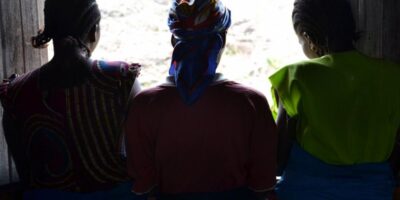The city was flooded last month, during the rainy period
When the heavens opened to unleash a torrent of rain over the city of Gonaïves on June 15, Israël Jeune, a student at l’université d’État d’Haïti (State University of Haiti), and his family had to make a quick decision: flee their home on Fleurissaint alley, where the water was dangerously close to overtaking a row of blocks, or sleep standing up, over the two days the flood lasted.
The disaster caused many victims: 1,300 houses were flooded and 3,000 families were affected by rising waters of about 1.5 meter, with damage to fifteen schools, according to the final report released by the direction départementale de la protection civile de l’Artibonite (the Directorate for Civil Protection) in tandem with the City of Gonaïves.
The city’s vulnerability to nature’s wrath is well known to experts, but, like elsewhere, no sustainable initiatives have emerged from the authorities to mitigate these risks.
According to the incumbent mayor of Gonaïves, Donald Diogène, the drains and canals in the city have not been evacuated for over ten years.
« For example, the La Quinte river drainage system, which crosses the town, was last cleaned during the administration of the late President René Garcia Préval, » he says.
Much of the city was flooded after heavy rains fell for several hours in Gonaïves on May 10, 2022. A report from the comité communal de la protection civile (the municipal committee for civil protection) recorded 499 flooded homes, with as many affected families, and one death.
Located 107 km from Port-au-Prince, the city experienced the worst floods in its history back in 2004 and 2008. Several thousands of people were killed and reported missing during these disasters.
The vulnerability of the town of Gonaïves is largely explained by the obstruction of the irrigation channels. « Maintenance work should be carried out periodically, » said Enold Dorsainville, director of the Travaux publics, transport et communication (TPTC; public works, transport and communications) of l’Artibonite since December 2021.
It is for this reason that said official has sent the Haitian state a clean up project estimated at about 97 million gourdes after the hurricane of June 15, 2022. « This amount will contribute to the cleaning and emptying of more than 90% of the city’s canals, » says the technician.
In the middle of the rainy season, the city joins an already lengthy waiting list. « We have yet to receive any of the funds from this request which has to be approved by the Ministry of Finance, » explains Dorsainville.
To respond to the urgency of the moment, le ministère des travaux publics (the Ministry of Public Works) preferred to allocate an amount of four million gourdes to the TPTC of l’Artibonite, » says Dorsainville. This amount does not represent much in terms of intervention costs given the seriousness of the problem.
More than three-quarters of Haitian cities are coastal and generally scored by rivers.
The case of Gonaïves, for example, is much more complex because the area is surrounded by three water currents, says Michèle Oriol, director of the comité interministériel d’aménagement du territoire (CIAT; the Inter-ministerial Committee for Regional Development).
« To the north is the Manyan Basin, to the west the Atlantic Ocean and Les Salines, and to the east the La Quinte River. When this river leaves its course, it can submerge the northern part of the city. »
And because the mouths of these rivers are clogged when it rains, these waters are forced back into the city, causing flooding, she says.
Following the intemperate weather of 2004, drainage work along with canal and gully cleanups were carried out. The residents will quickly transform the drains built into dumps, said Faustin Joseph, directeur départemental de la protection civile de l’Artibonite (the department chair of civil protection in l’Artibonite).
Gonaïves residents even build on old irrigation systems in the city, observes Michèle Oriol.
The town is a plain located downstream from the watersheds of the city of Ennery and the river La Quinte. Moreover, these bassins are completely deforested, thus favoring the transformation of heavy rains into torrents.
« When it rains, the water from the morne d’Ennery (Ennery hillside) and the morne de Puilboreau (Puilboreau mountain) flows directly into the city of Gonaïves, located below, » she explains.
A study by a Doctor of history, Georges Eddy Lucien, published in December 2010 in the Openedition journals on the September 2008 hurricane season in Haiti, underscores that the topography of Gonaïves is one of the potential factors behind this localities vulnerability to flooding.
« The average altitude of the city of Gonaïves is only about one meter above sea level. To the south and north, below morne Bienac located north of the city, the altitudes do not exceed four meters, » reads the article. This data highlights the risk of rising water in this city in the event of heavy rains.
Yet, the morne Bienac is completely deforested. The area is filled with houses when it should be reforested to avoid wearing at the land surface.
Israël Jeune’s family experienced no losses on June 15. With climate change increasing the power of some natural phenomena tenfold, there’s no telling if they’ll be so lucky next time.
English translation by Didenique Jocelyn and Sarah Jean.







Comments